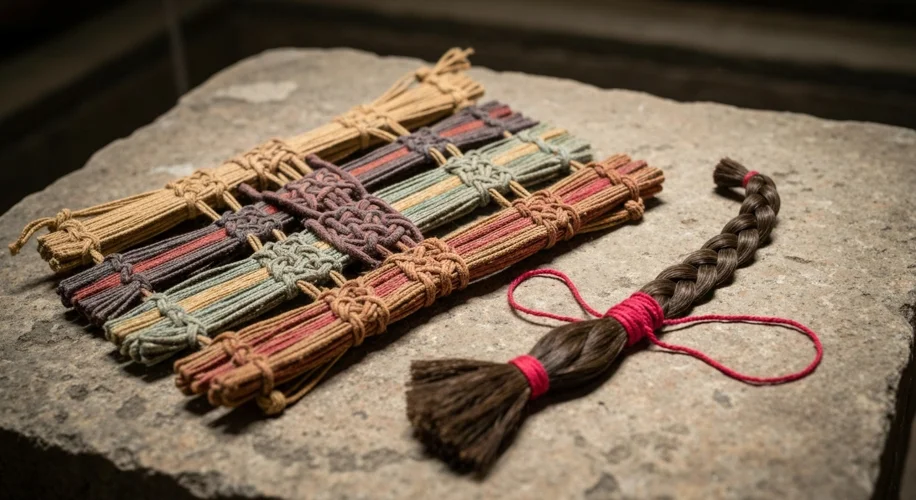Imagine an empire stretching across vast, treacherous mountains, a civilization with no written alphabet, yet managing to govern millions. This was the Inca Empire, a marvel of organization and administration in the Andes of South America. For centuries, historians grappled with how such a complex society kept track of its people, resources, and history without the familiar tools of ink and parchment. The answer, surprisingly, lay in something far more intimate and unexpected: a simple lock of hair.
Before the arrival of the Spanish in the 16th century, the Inca had developed a sophisticated system of record-keeping known as the quipu. These were not books or scrolls, but rather intricate arrangements of knotted cords. Different colors, knot types, and their positions on the cords represented numerical data, historical events, and even administrative information. The quipucamayocs, the specialized officials who created and interpreted the quipus, were highly trained and held positions of great importance.
However, the quipu, while ingenious, primarily dealt with quantifiable data. The nuances of personal lives, genealogies, and cultural practices were harder to capture. This is where the humble lock of hair enters the historical narrative, offering a tangible, biological link to the past.
In the arid conditions of the Andes, organic materials can be remarkably preserved. Archaeological discoveries have unearthed not just intact quipus, but also mummified remains and personal belongings, including locks of hair, carefully stored within burial sites. These locks of hair, often meticulously braided and sometimes even dyed, were not mere detritus of life; they were deliberately preserved artifacts.

Researchers have discovered that these locks of hair were often associated with specific individuals and were sometimes found alongside quipus or other significant objects. The hypothesis, which has gained traction through careful study, is that these hair samples served as a form of biological record-keeping. Imagine a young quipucamayoc meticulously tying knots on a cord representing his community. At the end of a significant period, perhaps a coming-of-age ceremony, a strand of his own hair might be carefully cut and preserved, attached to his personal quipu or a communal record.
This practice would have served multiple purposes. Firstly, it provided a unique identifier for the individual associated with a particular record. In a society where names and lineage were paramount, a lock of hair was a deeply personal and irrefutable testament to identity. Secondly, it could have been used to verify information or as a personal touchstone within the complex system of quipu administration. A quipucamayoc might consult a specific lock of hair to recall the specific details of a particular individual or event he had recorded.
Furthermore, the act of preserving hair speaks to a broader cultural understanding of connection and continuity. In many ancient cultures, hair was believed to hold a part of a person’s essence or spirit. By preserving hair, the Inca may have been ensuring a continued connection with their ancestors, reinforcing social bonds, and even seeking guidance from the past.
Consider the implications. A single lock of hair, unassuming in itself, could be the key to unlocking layers of meaning within an entire record. It could confirm the identity of the individual whose life events were meticulously cataloged on a quipu, or it could serve as a personal marker for a quipucamayoc, attesting to his own role in the empire’s administrative machinery.
While the precise methods of how hair samples were integrated into the quipu system are still being debated and researched, the evidence suggests a profound and deeply personal approach to record-keeping. It demonstrates that the Inca, despite lacking a written script, possessed a holistic understanding of data management, weaving together abstract numerical systems with tangible biological markers.
This ancient practice offers a powerful lesson: that even the most complex systems can be enriched by personal connection. The Inca’s lock of hair is not just an artifact of the past; it is a whisper from history, reminding us that knowledge and memory can be preserved in the most unexpected and intimate ways. It challenges our modern assumptions about what constitutes a record and how information can be stored, understood, and passed down through the ages.

